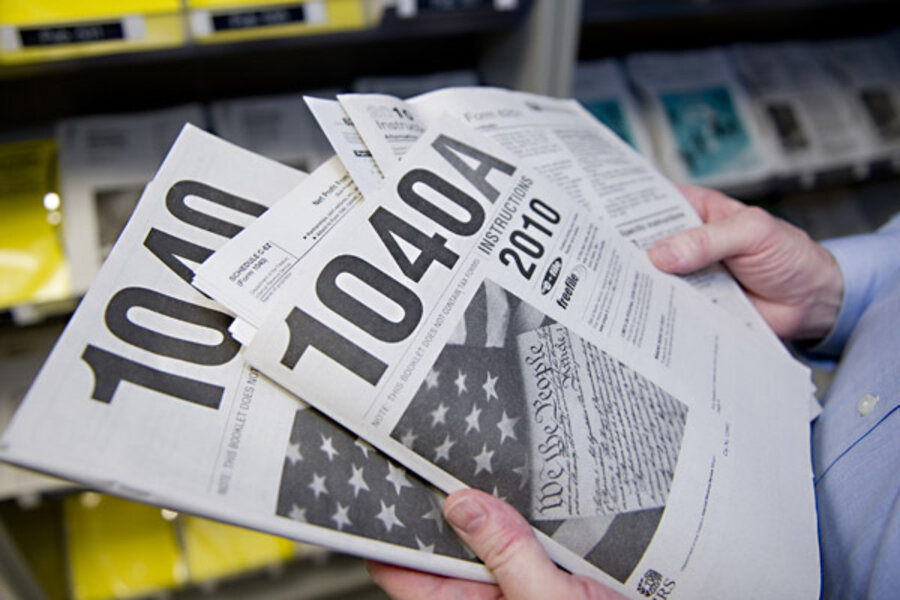How big are tax preferences? Try $1.3 trillion.
Loading...
The tax code is chock full of credits, deductions, deferrals, exclusions, exemptions, and preferential rates. Taken together, such tax preferences will total almost $1.3 trillion this year.
That’s a lot of money. But it doesn’t necessarily mean that $1.3 trillion is there for the picking in any upcoming deficit reduction or tax reform. In fact, even if Congress miraculously repealed all of these tax preferences, it would likely generate much less than $1.3 trillion in new resources.
Where did I come up with that number? For a short piece in Tax Notes, I simply added together all the specific tax expenditures identified by the Department of Treasury; these were reported in the Analytical Perspectives volume of the president’s recent budget.
Treasury doesn’t report this total for a good, technical reason: some provisions interact with one another to make their combined effect either larger or smaller than the sum of their individual effects. As a result, simple addition won’t give an exact answer. That’s an important issue. In the absence of a fully integrated figure, however, I think it’s useful to ballpark the overall magnitude using basic addition.
In your travels, you may find other estimates that do the same thing but come up with a figure of “only” $1.1 trillion. Why is mine higher? Because it includes some important information that Treasury reveals only in footnotes. Treasury’s main table estimates how tax expenditures reduce individual and corporate income tax receipts; those effects total $1.1 trillion. But they also have other effects. Refundable credits like the earned income tax credit increase outlays, for example, and some preferences, like those for employer-provided health insurance and alcohol fuels, lower payroll and excise taxes. I include those impacts in my $1.3 trillion figure.
Budget hawks and tax reformers have done a great job of highlighting tax expenditures in recent years. I fear, however, that we have lifted expectations too high. Just because the tax code includes $1.3 trillion in tax preferences doesn’t mean it will be easy to reduce the budget deficit or pay for lower tax rates by rolling them back. Politics is one reason. It’s easy to be against tax preferences when they are described as loopholes and special interest provisions. It’s another thing entirely when people realize that these include the mortgage interest deduction, the charitable deduction, and 401(k)s.
Basic fiscal math is another challenge. Tax expenditure estimates do not translate directly into potential revenues. Indeed, there are several reasons to believe that the potential revenue gains from rolling back tax preferences are less than the headline estimates. One reason is that the estimates are static—they measure the taxes people save today but do not account for the various ways that people might react if a preference were reduced or eliminated; those reactions may reduce potential revenues. Second, most reforms would phase out such preferences rather than eliminate them immediately. That too reduces potential revenues, at least over the next decade or so.
Finally, the value of tax preferences depends on other aspects of the tax code, most notably tax rates. If a tax reform would lower marginal tax rates, the value of deductions, exclusions, and exemptions would fall as well. Suppose you are in the 35 percent tax bracket. Today, each dollar you give to charity results in 35 cents of tax savings—a 35-cent tax expenditure. If the top rate were reduced to 28 percent, as some propose, your savings from charitable donations would be only 28 cents. The 20 percent reduction in tax rates would thus slice the value of your tax expenditure by 20 percent. That means that the revenue gain from eliminating the deduction—or any other similar tax expenditures—would also shrink by 20 percent, thus making it harder for tax expenditure reform to fill in the revenue gap left by reducing tax rates.
My message is thus a mixed one. Tax expenditures are very large—$1.3 trillion this year alone if you add up all the individual provisions – and deserve close scrutiny. But we need to temper our aspirations of just how much revenue we can generate by rolling them back. It isn’t as though there’s an easy $1.3 trillion sitting around. In coming months, the Tax Policy Center will explore how to translate tax expenditure figures into more reasonable estimates of the potential revenues that tax reformers and budget hawks can bargain over.
P.S. For an interesting analysis of how individual tax preferences interact with each other, see this piece by TPC’s Dan Baneman and Eric Toder.







